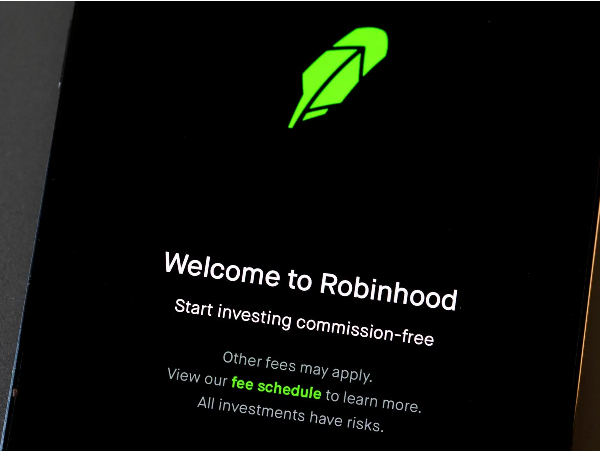About Alibaba Group Holding Limited (BABA)
Alibaba Group Holding Limited was established in 1999 by Jack Ma in Hangzhou, China. Its businesses are in retail, cloud intelligence, logistics, local consumer services, technology infrastructure and digital media and entertainment. A multinational technology conglomerate, Alibaba is one of the leading global companies in online retail. It has a market cap of around $294.28 billion and it is the 29th most valuable company globally by market cap as per CompaniesMarketCap. Currently, the Alibaba share price is $126.08 post a staggering decline of 3.47%. The U.S. tariffs and China’s new measures to approach them is one of the pivotal reasons for this.
Recent Financial Performance
Its recent financial performance has witnessed modest growth and downfalls due to the company’s strategic initiatives, tariff war, impacted exports and market volatility. Alibaba’s 2025 Q1 results recorded a total revenue of RMB 243.2 billion ($33.4 billion) which is a 4% increase year-over-year, GAAP net income of RMB 24.0 billion ($3.3 billion), a 27% decrease year-over-year and non-GAAP net income of RMB 40.7 billion ($5.6 billion), a dip of 9% from the previous year. Its efforts to invest in AI and cloud infrastructure, descale a few businesses and cost and operational efficiency have contributed to these results.
It received an adjusted EBITDA of RMB 45.0 billion ($6.2 billion), a 1% decline year-over-year and a free cash flow of RMB 17.4 billion ($2.4 billion), a decrease of RMB 21.7 billion from the prior-period year. The widespread operational changes, pricing strategies and investments for long-turn returns can be attributed to this.
Growth Drivers
The key moves by Alibaba to augment its market position have received moderate investor confidence because of its expected negative impact on the short-term revenues, mixed global sentiments on China’s retort to the U.S. tariffs and positive long-term growth potential.
Developments in AI and cloud intelligence- Alibaba Cloud's revenue increased by 13% year-over-year to RMB 31.74 billion (US$4.35 billion), with AI-related products achieving triple-digit growth for the sixth consecutive quarter. This integration of AI has provided an impetus to its growth potential and value proposition.
Global expansion of commerce retail- The increased consumer spending that has been witnessed by AliExpress in addition to the strong performances of Trendyol and Lazada, have led to a revenue upsurge of 38% year-over-year to US$4.32 billion in the International Digital Commerce Group.
Supply chain optimization- The move to expand Cainiao's logistics network in both the domestic and international markets resulted in a revenue increase of 16% year-over-year.
Rise in efficacy of digital media and entertainment- The company’s investments in its offerings in digital media and entertainment, such as in Youku, showed an upswing in the customer sentiment and revenue potential.
Business and cost restructuring- With a focus on enriching its profitability and competence, Alibaba initiated large-scale efforts, including the scaling down of select direct sales operations and the enhancement of its domestic e-commerce operations to beat the competition.
Potential Risks
The potential risks that plague Alibaba encompass its weak financial performance in important areas, awaited benefits of its business initiatives, regulatory challenges and macroeconomic factors. In Q1 FY2025, Alibaba FCF decreased by 56% year-over-year to RMB 17.37 billion ($2.4 billion). With its modest revenue growth of 4% year-over-year and challenges to largely augment its profitability, the resultant is a weakened investor confidence in the company’s sustainability.
The company’s long-term strategic actions are viewed with trepidation for its impact on the short-term returns. The prevalent saturation of the e-commerce industry confines the future projections of BABA for the investors. Additionally, Reuters says that the ongoing regulatory scrutiny under the U.S. Holding Foreign Companies Accountable Act (HFCAA) and China's intensified oversight of Ant Group present significant headline risks for Alibaba Group Holding Ltd.
Investor Outlook
Despite the roadblocks that Alibaba may encounter in the near future, the market is bullish on its performance. It is ranked by analysts among the Strong Buy stocks. Notably, Morgan Stanley upgraded it from “Equal Weight” to “Overweight,” raising its price target from $100 to $180. While the company is undertaking momentous initiatives, the BABA stock should be assessed for the regulatory and operational risks. Investors are likely to embrace a varied and multi-faceted approach to evaluate the stock.






























About Alibaba Group Holding Limited (BABA)
Alibaba Group Holding Limited was established in 1999 by Jack Ma in Hangzhou, China. Its businesses are in retail, cloud intelligence, logistics, local consumer services, technology infrastructure and digital media and entertainment. A multinational technology conglomerate, Alibaba is one of the leading global companies in online retail. It has a market cap of around $294.28 billion and it is the 29th most valuable company globally by market cap as per CompaniesMarketCap. Currently, the Alibaba share price is $126.08 post a staggering decline of 3.47%. The U.S. tariffs and China’s new measures to approach them is one of the pivotal reasons for this.
Recent Financial Performance
Its recent financial performance has witnessed modest growth and downfalls due to the company’s strategic initiatives, tariff war, impacted exports and market volatility. Alibaba’s 2025 Q1 results recorded a total revenue of RMB 243.2 billion ($33.4 billion) which is a 4% increase year-over-year, GAAP net income of RMB 24.0 billion ($3.3 billion), a 27% decrease year-over-year and non-GAAP net income of RMB 40.7 billion ($5.6 billion), a dip of 9% from the previous year. Its efforts to invest in AI and cloud infrastructure, descale a few businesses and cost and operational efficiency have contributed to these results.
It received an adjusted EBITDA of RMB 45.0 billion ($6.2 billion), a 1% decline year-over-year and a free cash flow of RMB 17.4 billion ($2.4 billion), a decrease of RMB 21.7 billion from the prior-period year. The widespread operational changes, pricing strategies and investments for long-turn returns can be attributed to this.
Growth Drivers
The key moves by Alibaba to augment its market position have received moderate investor confidence because of its expected negative impact on the short-term revenues, mixed global sentiments on China’s retort to the U.S. tariffs and positive long-term growth potential.
Developments in AI and cloud intelligence- Alibaba Cloud's revenue increased by 13% year-over-year to RMB 31.74 billion (US$4.35 billion), with AI-related products achieving triple-digit growth for the sixth consecutive quarter. This integration of AI has provided an impetus to its growth potential and value proposition.
Global expansion of commerce retail- The increased consumer spending that has been witnessed by AliExpress in addition to the strong performances of Trendyol and Lazada, have led to a revenue upsurge of 38% year-over-year to US$4.32 billion in the International Digital Commerce Group.
Supply chain optimization- The move to expand Cainiao's logistics network in both the domestic and international markets resulted in a revenue increase of 16% year-over-year.
Rise in efficacy of digital media and entertainment- The company’s investments in its offerings in digital media and entertainment, such as in Youku, showed an upswing in the customer sentiment and revenue potential.
Business and cost restructuring- With a focus on enriching its profitability and competence, Alibaba initiated large-scale efforts, including the scaling down of select direct sales operations and the enhancement of its domestic e-commerce operations to beat the competition.
Potential Risks
The potential risks that plague Alibaba encompass its weak financial performance in important areas, awaited benefits of its business initiatives, regulatory challenges and macroeconomic factors. In Q1 FY2025, Alibaba FCF decreased by 56% year-over-year to RMB 17.37 billion ($2.4 billion). With its modest revenue growth of 4% year-over-year and challenges to largely augment its profitability, the resultant is a weakened investor confidence in the company’s sustainability.
The company’s long-term strategic actions are viewed with trepidation for its impact on the short-term returns. The prevalent saturation of the e-commerce industry confines the future projections of BABA for the investors. Additionally, Reuters says that the ongoing regulatory scrutiny under the U.S. Holding Foreign Companies Accountable Act (HFCAA) and China's intensified oversight of Ant Group present significant headline risks for Alibaba Group Holding Ltd.
Investor Outlook
Despite the roadblocks that Alibaba may encounter in the near future, the market is bullish on its performance. It is ranked by analysts among the Strong Buy stocks. Notably, Morgan Stanley upgraded it from “Equal Weight” to “Overweight,” raising its price target from $100 to $180. While the company is undertaking momentous initiatives, the BABA stock should be assessed for the regulatory and operational risks. Investors are likely to embrace a varied and multi-faceted approach to evaluate the stock.